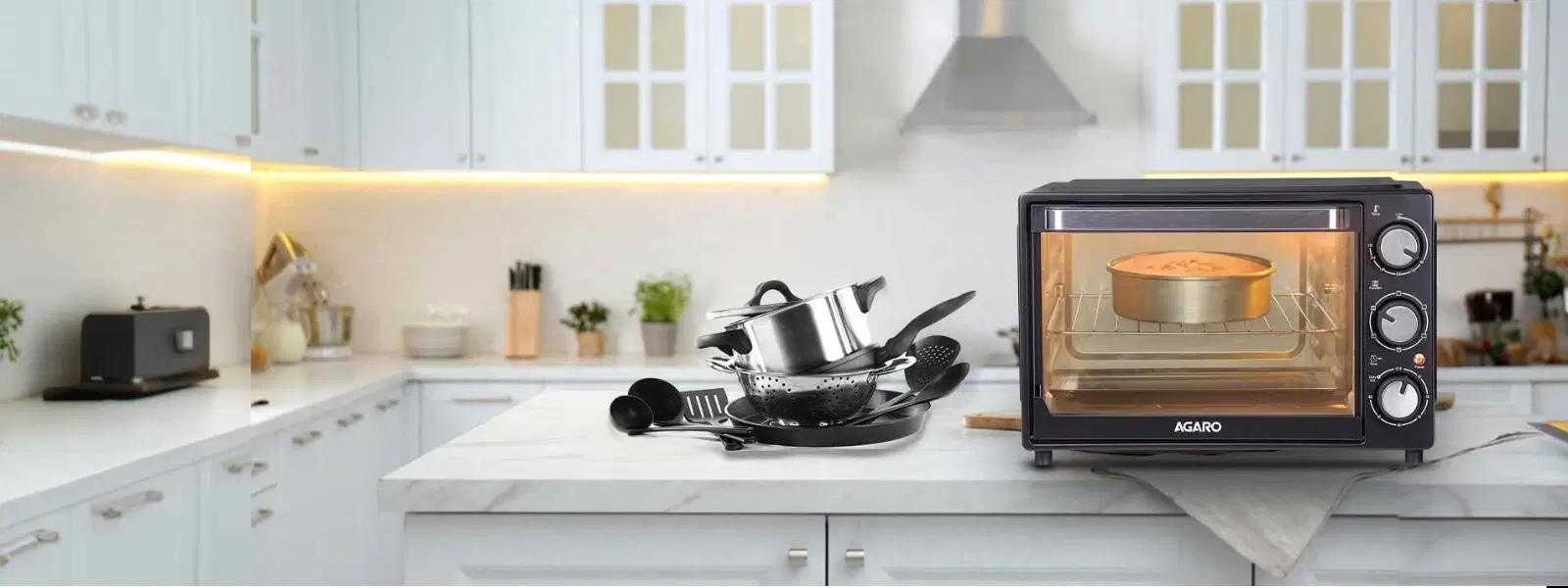
Home Appliances
•03 min read
Ever wondered if you can use steel utensils in the microwave? You’re not alone—this question sparks curiosity in many kitchens across the country. Microwaves provide convenience and speed, yet their interaction with materials like steel remains a topic that needs clear answers. In this guide, we will address frequently asked questions about using steel in microwave ovens, explore the science of microwave technology and safety, and provide expert tips to help you enjoy your cooking experience safely.
Microwave ovens heat food using electromagnetic waves. These waves cause water molecules in food to vibrate, creating heat that cooks or warms your meal evenly in many cases. However, when it comes to materials, not every option reacts the same way. The interaction between microwaves and metals is a key area of concern.
Steel is a highly conductive metal that reflects microwaves. This reflection can lead to uneven heating and even cause sparks, which might damage the microwave or create hazards for your kitchen. The principle here is simple: metals like steel disrupt the electromagnetic energy, making them unsuitable for microwave use.
When you microwave steel, the metal’s conductive properties can cause sparks. These sparks may lead to overheating and potentially ignite a fire. In addition, the uneven reflection of waves can damage both the microwave and any food containers used alongside. The effects of metal in the microwave are unpredictable, and such usage could result in significant damage.
Many believe that small steel objects or certain modern microwave ovens can safely handle steel. However, using steel in the microwave is generally risky. It is important to understand that steel utensils in the microwave are not safe, regardless of their size or design. The myth that all metals behave the same way is incorrect—there is a clear distinction between steel and metals like certain types of aluminium, which may be used under very controlled circumstances.
A microwave-safe material is one that does not interact negatively with electromagnetic waves. Materials such as glass, ceramic, and specially designed microwave-safe plastics allow microwaves to pass through without causing sparks or reflecting the energy. Understanding which materials are safe can help you make better choices in your kitchen.
For those looking to heat food in a microwave, alternatives to steel are available. Consider using glass or ceramic bowls and plates. These options are purpose-built for microwave use and carry the 'microwave-safe' label, ensuring that your cooking process is safe and efficient. They also work well for handling hot contents, thereby contributing to your overall kitchen safety. Platforms like Tata Neu ensure you can shop smartly and enjoy NeuCoin rewards on high-quality, safe cookware.
When using a microwave, always follow these straightforward tips: avoid placing any metal objects inside, use only utensils marked as microwave-safe, and inspect cookware for any damage before use. Adhering to the manufacturer’s instructions is vital for both your safety and the longevity of your appliance. These measures are especially useful when shopping for home appliances through platforms like Tata Neu, where customer care and meticulous after-sales support are top priorities.
Identifying microwave-safe products is easier than you might think. Look for symbols or labels on your cookware indicating safety for microwave use. Typical markings include a microwave symbol or the phrase 'microwave-safe'. Such indicators ensure that your appliances maintain their integrity and performance during use.
Pro Tip: Know Your Microwave-Safe Materials!
Did you know? Materials like glass and ceramic are excellent choices for microwave use because they don’t interact with electromagnetic waves. Always check for a 'microwave-safe' label to ensure safety!
Steel reflects microwaves, which can cause sparks, damage the microwave, and lead to fire hazards.
Steel utensils can sometimes be used in convection mode when microwaves are not actively heating, but this depends on the specific microwave model. Always consult your microwave’s user manual.
Microwaving steel can cause sparks, lead to overheating, and potentially damage your microwave or cause safety hazards.
Certain metals, like small amounts of aluminium foil, can be used in specific ways, but extreme caution is required and guidelines must be strictly followed.
Glass, ceramic, and microwave-safe plastics are excellent alternatives for heating food in a microwave.
To summarise, using steel in the microwave is not advised. The risks include sparks, uneven heating, and potential damage to both your appliance and food containers. Instead, opting for microwave-safe materials such as glass, ceramic, or specially marked plastics will not only safeguard your device but also ensure that your culinary endeavours are successful. By understanding microwave safety and making informed choices, you benefit from a reliable and efficient cooking experience, much like the seamless shopping experience available on Tata Neu. Enjoy the convenience, earn NeuCoin rewards, and progress confidently in your kitchen ventures.